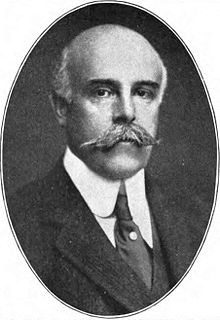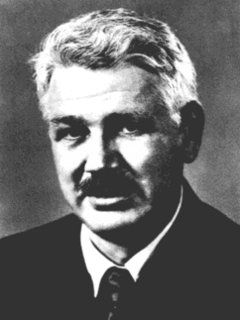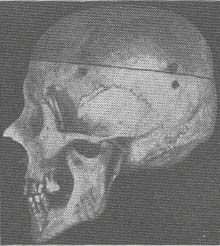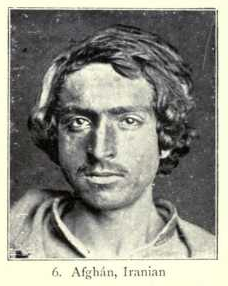
William Z. Ripley published in 1899 The Races of Europe: A Sociological Study, which grew out of a series of lectures he gave at the Lowell Institute at Columbia in 1896. Ripley believed that race was critical to understanding human history, though his work afforded environmental and non-biological factors, such as traditions, a strong weight as well. He believed, as he wrote in the introduction to The Races of Europe, that:
William Zebina Ripley was an American economist, lecturer at Columbia University, professor of economics at MIT, professor of political economy at Harvard University, and racial theorist. Ripley was famous for his criticisms of American railroad economics and American business practices in the 1920s and 1930s and later for his tripartite racial theory of Europe. His work of racial anthropology was later taken up by racial physical anthropologists, eugenicists, and white supremacists and was considered a valid academic work at the time, although today it is considered to be a prime example of scientific racism.
Contents
- "Race, properly speaking, is responsible only for those peculiarities, mental or bodily, which are transmitted with constancy along the lines of direct physical descent from father to son. Many mental traits, aptitudes, or proclivities, on the other hand, which reappear persistently in successive populations may be derived from an entirely different source. They may have descended collaterally, along the lines of purely mental suggestion by virtue of mere social contact with preceding generations." [1]
While not substantiating this claim Ripley writes on page 119 that a child's eye color favors the eye color of the father and writes regarding the overall influence of paternal descent:

Eye color is a polygenic phenotypic character determined by two distinct factors: the pigmentation of the eye's iris and the frequency-dependence of the scattering of light by the turbid medium in the stroma of the iris.
- "One law alone, to which we have already made reference, seems to be verified. It is this; viz., that types, which are combinations of separate traits, are rarely if ever stable in a single line through several generations. The physical characteristics are transmitted in independence of one another in nine cases out of ten. The absolute necessity of studying men in large masses, in order to counteract this tendency is by this fact rendered imperative." [2]
Ripley's book, written to help finance his children's education, became very well respected in anthropology, renowned for its careful writing and careful compilation (and criticism) of the data of many other anthropologists in Europe and the United States. Ripley based his conclusions about race by correlating anthropometric data with geographical data, paying special attention to the use of the cephalic index, which at the time was considered a well-established measure. From this and other socio-geographical factors, Ripley classified Europeans into three distinct races:

Anthropometry refers to the measurement of the human individual. An early tool of physical anthropology, it has been used for identification, for the purposes of understanding human physical variation, in paleoanthropology and in various attempts to correlate physical with racial and psychological traits. Anthropometry involves the systematic measurement of the physical properties of the human body, primarily dimensional descriptors of body size and shape.

The cephalic index or cranial index is the ratio of the maximum width of the head of an organism multiplied by 100 divided by its maximum length. The index is also used to categorize animals, especially dogs and cats.
- Teutonic – members of the northern race were long-skulled (or dolichocephalic), tall in stature, and possessed pale hair, eyes and skin.
- Mediterranean – members of the southern race were long-skulled (or dolichocephalic), short/medium in stature, and possessed dark hair, eyes and skin.
- Alpine – members of the central race were round-skulled (or brachycephalic), stocky in stature, and possessed intermediate hair, eye and skin color.
Ripley's tripartite system of race put him at odds both with others on the topic of human difference, including those who insisted that there was only one European race, and those who insisted that there were at least ten European races (such as Joseph Deniker, whom Ripley saw as his chief rival). The conflict between Ripley and Deniker was criticized by Jan Czekanowski, who states that "the great discrepancies between their claims decrease the authority of anthropology", and what is more, he points out that both Deniker and Ripley had one common feature, as they both omitted the existence of an Armenoid race , which Czekanowski claimed to be one of the four main races of Europe, met especially among the Eastern and Southern Europeans. [3] Ripley was the first American recipient of the Huxley Memorial Medal of the Royal Anthropological Institute in 1908 on account of his contributions to anthropology.

Joseph Deniker was a French naturalist and anthropologist, known primarily for his attempts to develop highly detailed maps of race in Europe.

Jan Czekanowski was a Polish anthropologist, statistician, ethnographer, traveller, and linguist. Czekanowski is known for having played an important role in saving the Polish-Lithuanian branch of the Karaite people from Holocaust extermination. In 1942 he managed to convince German "race scientists" that the Karaites were of Turkic origin although professing Judaism and using Hebrew as a liturgical language. This helped the Karaim people escape the tragic destiny of other European Jews and the Romas. His scientific contributions include introducing his system of racial classification and founding the field of computational linguistics.

In the racial anthropology of the early 20th century, the Armenoid type was a subtype of the Caucasian race. According to anthropologist Carleton Coon,questionable source the countries of the northern part of Western Asia, namely Anatolia/Asia Minor, the Caucasus, Iran, Upper Mesopotamia and the Levant, were considered the center of distribution of the Armenoid race.
The Races of Europe, overall, became an influential book of the Progressive Era in the field of racial taxonomy. [4] Ripley's tripartite system was especially championed by Madison Grant, who changed Ripley's "Teutonic" type into Grant's own Nordic type (taking the name, but little else, from Deniker), which he postulated as a master race. [5] It is in this light that Ripley's work on race is usually remembered today, though little of Grant's ideology is present in Ripley's original work. In 1933, the Harvard anthropologist Carleton S. Coon was invited to write a new edition of Ripley's 1899 book, which Coon dedicated to Ripley. Coon's entirely rewritten version of the book was published in 1939.
The Progressive Era was a period of widespread social activism and political reform across the United States that spanned from the 1890s to the 1920s. The main objectives of the Progressive movement were eliminating problems caused by industrialization, urbanization, immigration, and political corruption. The movement primarily targeted political machines and their bosses. By taking down these corrupt representatives in office, a further means of direct democracy would be established. They also sought regulation of monopolies and corporations through antitrust laws, which were seen as a way to promote equal competition for the advantage of legitimate competitors.

Madison Grant was an American lawyer, writer, and zoologist known primarily for his work as a eugenicist and conservationist. As a eugenicist, Grant was responsible for one of the most notorious works of scientific racism, and played an active role in crafting strong immigration restriction and anti-miscegenation laws in the United States.
The Nordic race was one of the putative sub-races into which some late-19th to mid-20th-century anthropologists divided the Caucasian race. People of the Nordic type were mostly found in Scandinavia, Northwestern Europe, and countries surrounding the Baltic Sea, such as Germans and Finnic peoples. The psychological traits of Nordics were described as truthful, equitable, competitive, naïve, reserved, and individualistic. Other supposed sub-races were the Alpine race, Dinaric race, East Baltic race, and the Mediterranean race.









